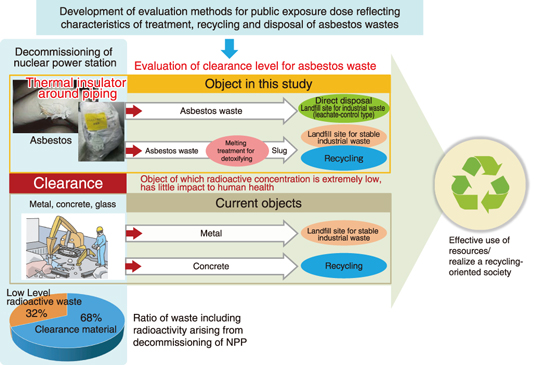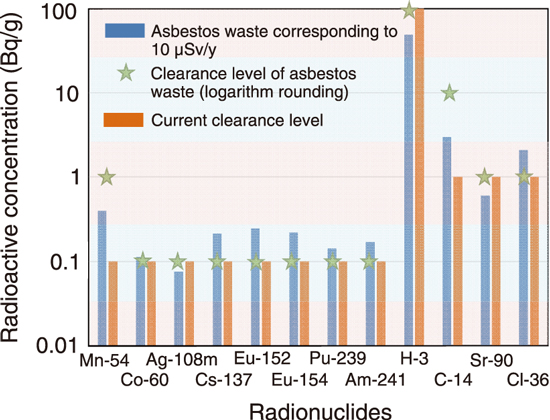
Fig.2-14 Outline of clearance level evaluation for asbestos waste

Fig.2-15 Evaluation results of clearance levels of asbestos waste for typical radionuclides
Some of the radioactive wastes arising from decommissioning of nuclear power plants contain very low radioactive concentration that almost have no adverse effect on human health. Through the “clearance system”, these wastes can be recycled or placed in landfills as industrial wastes after approval and confirmation from the Nuclear Regulatory Authority (NRA) in Japan is obtained.
Previously, asbestos was not under the clearance system of Japan, and therefore has been stored at the radiation controlled area in the facility even if the radioactive concentration of asbestos waste is extremely low. In order to move forward with the treatment of asbestos waste, techniques for exposure evaluation reflecting the characteristics of special treatment and landfill for preventing the inhalation of asbestos fiber dispersed from the waste such as packaging reduplicated by water resisting material and detoxification melting are needed.
Therefore, the evaluation method for public exposure doses from asbestos waste with determination of exposure pathways and evaluation parameters has been developed (Fig.2-14).
Firstly, exposure pathways were determined based on the results of the investigation on actual treatments and landfill of asbestos waste as special industrial waste. The pathways regarding leachate-control landfill sites, which were not considered for metal and concrete waste, were added. Secondly, the range and distribution type (probability density) of the parameter values for all pathways were determined. Thirdly, representative and conservative values were determined from the ranges of parameters for deterministic analysis calculating public exposure doses for deriving clearance level. Finally, we conducted the probabilistic analysis using the range and distribution type of parameters to evaluate the effects of uncertainties of the parameters.
Clearance levels of asbestos waste for 33 radionuclides previously regulated in NRA ordinance for nuclear reactors were evaluated by the developed method using exposure dose calculation code PASCLR2 developed by Japan Atomic Energy Agency. The results show that the obtained clearance levels are the same as or greater than the current clearance levels derived for metal and concrete (Fig.2-15). In addition, exposure doses by probabilistic analysis were less than ten times of those in deterministic analysis. This result satisfies the regulatory requirement that the public doses are not sufficiently large even if combinations of extremely conservative values occur with low probabilities. Therefore, it was confirmed that the clearance levels by deterministic analysis were appropriate.
This made it possible to apply the current clearance level to the asbestos waste. As a result, it opens the way to appropriate treatment, recycle, and landfill of the waste. This advances future treatment and recycling of asbestos waste, which will be arising as decommissioning progresses, and help to realize a recycling-oriented society.
This research was a part of the result of contract work supported by the Nuclear Regulation Authority in Japan, “A study on decommissioning and clearance (FY2017–FY2020)”.
(Taro Shimada)